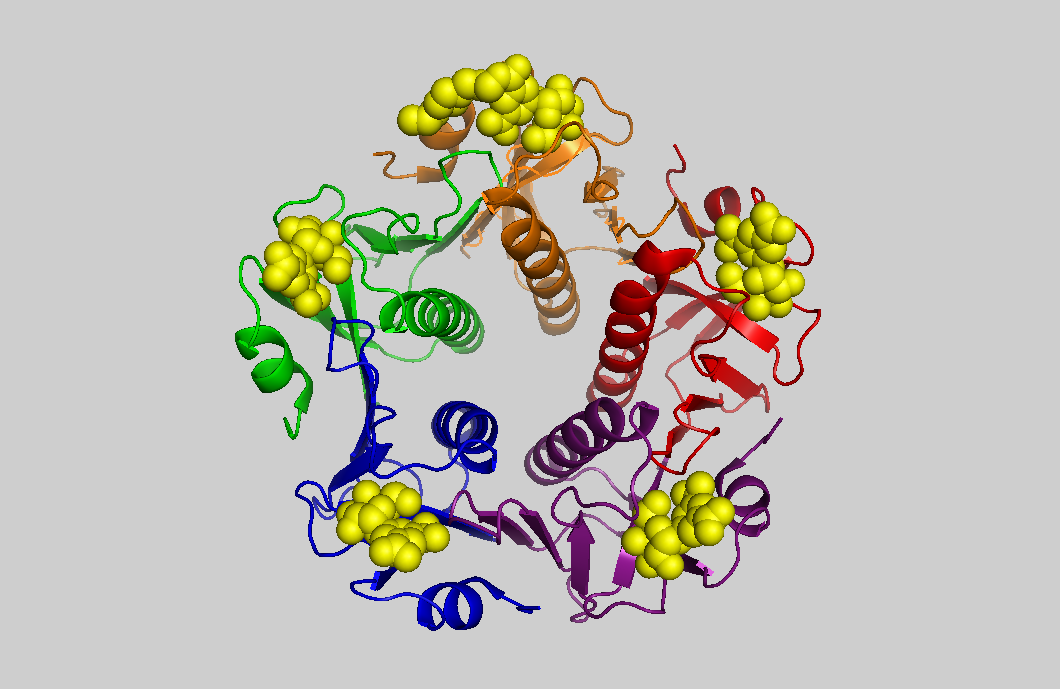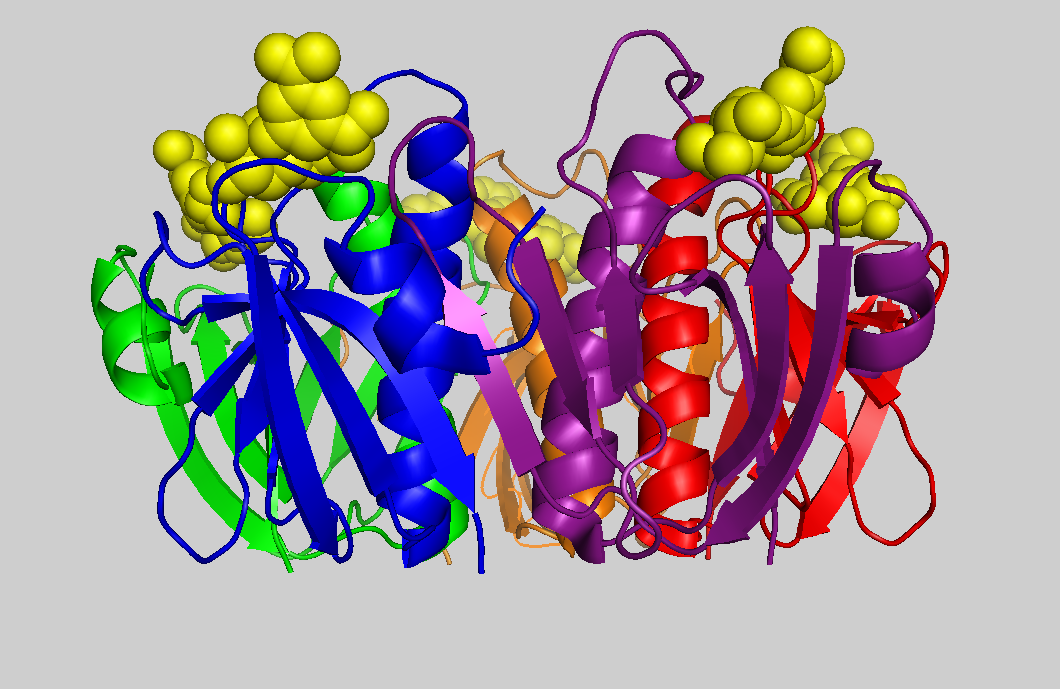Projects
> Bacterial disease
> Calcium-binding proteins
> G-quadruplexes
> New methods
People
Collaboration
Funding
Publications
Cholera outbreaks (and similar diarrheal diseases) occur in poor regions of the world without sanitation, especially refugee camps. Treatments need to be cheap, simple and robust. Fortunately, a solution of rehydration salts and sugar is sufficient to treat most patients. Exceptions are the young (under fives) and old, who are more susceptible to cholera. One problem identified by the World Health Organization (WHO) is that young children do not like the taste of the salty solutions.
Our project is inspired by Dr. Mateo Politi, an ethnopharmacist who researches and validates existing cures amongst the herbal treatments used by local populations. Mateo showed that garlic, as reported in 19th century Bulgaria, contains compounds that bind to a region of the cholera toxin protein that is involved in recognizing human cells. In other words, a concentrated garlic solution is a potential cheap treatment for cholera - but it won't make you many friends...
We are searching for other plant extracts that can play a similar beneficial role as garlic. Our aims are to find plant extracts that can reinforce the potency and mineral content of rehydration salts, as well as to mask the taste of the salts. We are working with researchers in Italy and Spain on a project funded by the Portuguese FCT. If you know of any plants or herbs used by your family or community to treat diarrheal diseases, we'd be happy to hear about them. Contact Malgorzata (mpalczewska@itqb.unl.pt)


Thefigure shows the 3D structure of the non-toxic part of cholera toxin. Cholera toxin is a complex made from one A-subunit (which does the damage when injected into your cells) and five B-subunits (which carry the A-subunit and deliver it to your cells). The five B-subunits are colored red-orange-green-blue-purple. The yellow molecules are small sugars similar to those found on the surface of human cells. Plant extracts can help to block the B-subunit binding to your cells. This then prevents the A subunit from being delivered into your cells.
Tuberculosis
Tuberculosis is another disease of poor communities targeted by the WHO. While the numbers of infected people and deaths are decreasing, there is a worrying counter-trend of increased cases of multiple-resistant tuberculosis. A second problem is that patients with HIV/AIDS are more susceptible to other diseases, including tuberculosis. HIV infection rates are very high in several southern African countries and co-infection with tuberculosis (and drug-resistant tuberculosis) is a big problem. Tuberculosis is a difficult bacterial infection to treat and while patients may feel better after a month, treatment requires a daily dose of antibiotics for 6-12 months. There is a need to develop new drugs to treat tuberculosis in order to achieve the WHO aims to eradicate the disease on a world scale by 2050.
We are working with researchers in India and Spain to search for existing drugs that might be re-utilized as tuberculosis treatments, and is funded as an ERANET project from the EU and India. The fact that the drugs have already received certification against another disease will avoid a large portion of the drug development costs in terms of time and money. We are particularly interested in blocking a particular human protein that recognizes both HIV and tuberculosis, and allows them access to our healthy cells. For more on this project, contact Patrick (pgroves@itqb.unl.pt)
Streptococci infection
Streptococci are gram positive bacteria that cause a broad array of diseases in animals and humans. The most important pathogens are Streptococcus pneumoniae (responsible for pneumonia, meningitis, otitis media, invasive pneumococcal disease), Streptococcus agalactiae (sepsis, pneumonia, meningitis and invasive diseases), and Streptococcus pyogenes (responsible for pharyngitis, skin and deep tissue infections, septic shock syndrome and necrotizing fasciitis). Streptococci are responsible for over 1.5 millions deaths worldwide.
Mechanisms of streptococcal virulence are not fully understood and cannot be explained only by the production of virulence factors encoded by particular strains. Many researchers switched their interests to the expression of genes involved in the regulation of virulence in response to environmental and host conditions.
Currently we are involved in a project to characterize a Streptococcoccus pyogenes regulator that is involved in virulence. We are providing support for protein expression and purification, as well as biochemical/structural characterization. Contact Malgorzata (mpalczewska@itqb.unl.pt) for more information.
.